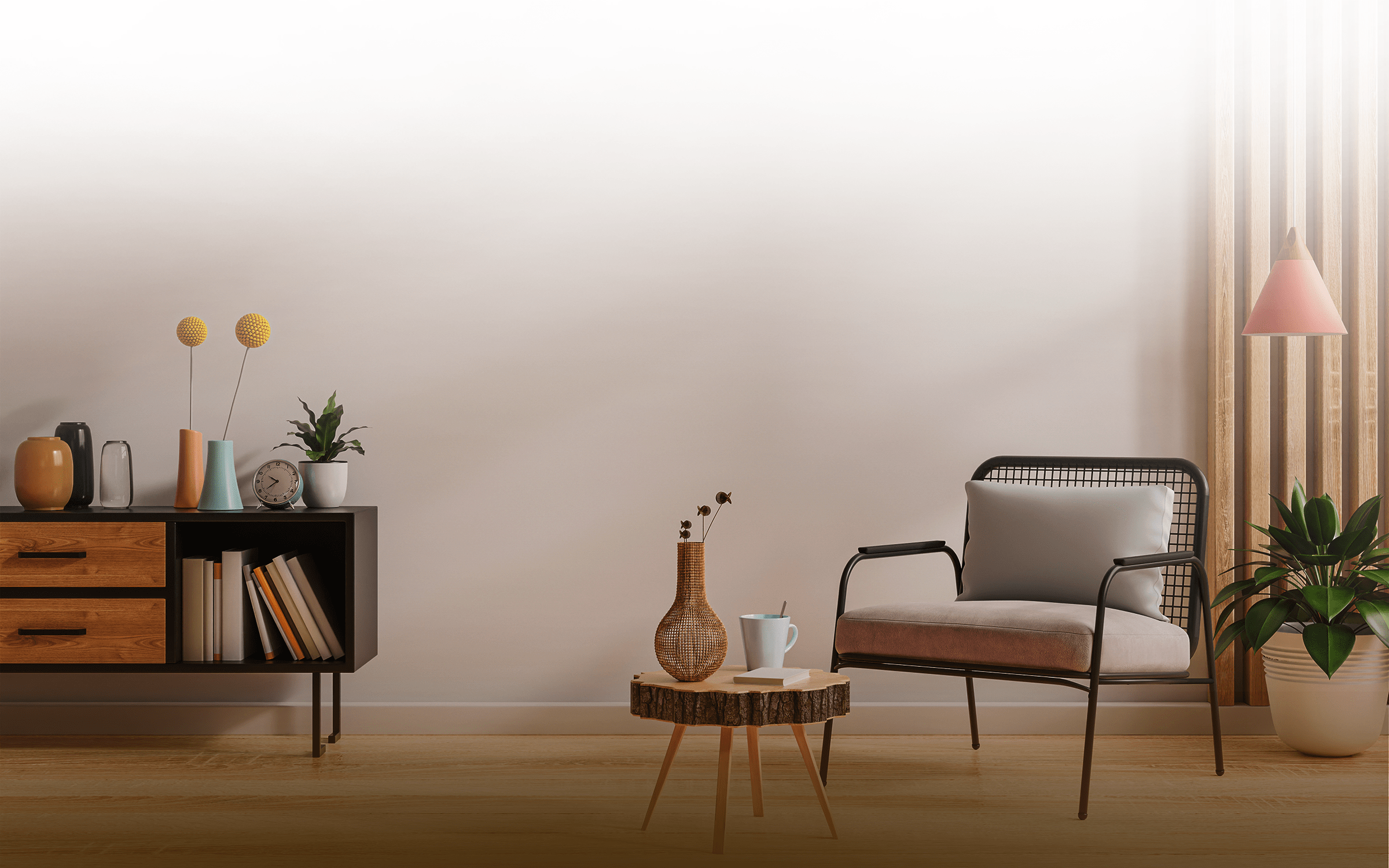It’s really important to grasp how furniture styles evolve because they change with the artistic and design trends of the time. Getting a handle on these big design shifts helps you become a savvy shopper. Plus, it sharpens your personal design preferences and gives you the knack for smoothly blending new and traditional furniture styles into your living space.
The ever-changing popularity of different furniture styles also reminds us that what’s considered cool today might not be tomorrow. But if you focus on a furniture style that really speaks to you, you can put together a super attractive home look that stands the test of time, no matter what’s trendy right now.
Most Popular Modern Furniture Style
The world of furniture design is a treasure trove of captivating styles that have truly made their mark on interior beauty. Some of the most beloved styles include modern, Scandinavian, mid-century modern, mission style, Art Deco, Victorian, contemporary, and industrial. These timeless, modern furniture styles have stood the test of time, capturing the hearts of many generations and staying relevant long after they were first introduced. They have an ageless charm that has earned them a permanent place in the world of home decor.
1. Mission Style Furniture: Embracing Simplicity and Craftsmanship
Coming to life as an American design movement in the late 19th century, Mission style furniture stepped away intentionally from the ornate and intricate designs of the Victorian era. Its standout feature is its clean and simple lines, reminiscent of the principles seen in England’s Arts and Crafts movement. This style is rooted in a deep respect for skilled craftsmanship, the use of genuine raw materials, and a commitment to producing high-quality pieces. Often compared to Craftsman style furniture due to similar design principles, Mission style carries a similar spirit while showcasing its own unique characteristics.
Key Features:
– Vertical/curved lines and horizontal lines adorned with slat or spindle backs and sides
– Emphasis on 90-degree angles and flat planes
– Preference for rectangular shapes
– Celebratory display of exposed joints
– Natural finishes that allow the wood grain to shine through
– Utilization of chunky metal drawer pulls and hinges, adding a touch of rustic authenticity
Complementing Patterns:
– Geometric patterns that align with the style’s emphasis on clean lines and shapes
– Solid colors that accentuate the simplicity of the design
Coordinating Colors:
– Burgundy, infusing warmth and depth
– Pine and Forest Green, echoing nature’s hues
– Ochre, radiating earthy vibrancy
– Burnt Sienna, evoking a sense of rustic charm
– Brown, providing a grounding neutral
– Sky to Midnight Blue, offering a serene contrast
– Deep Gray, enhancing the understated elegance
2. Industrial Style Furniture: Blending Nostalgia with Modernism
The unique identity of industrial style furniture draws inspiration from the robust design elements found in historic factories and industrial environments. This aesthetic embraces rugged materials like galvanized metal, strong piping, and the allure of repurposed solid wood furniture, creating an authentic connection to the past. Rising to prominence in the early 2000s and maintaining its appeal through the 2010s, this furniture style’s magnetism remains unwavering. Its resurgence in popularity has gone beyond its own boundaries, seamlessly integrating its textures and stories into other design styles like farmhouse, minimalism, and modernism.
Key Features:
– Pragmatic, minimalist furniture designs that emphasize function and utility
– Integration of industrial materials like metal, glass, concrete, and the rustic elegance of reclaimed wood
– Diverse types of furniture pieces, from modern creations to repurposed and “well-worn” items
– Exposed fasteners and light bulbs
– Prevalence of large sectionals to delineate the expansive “warehouse” spaces
Complementing Textures and Patterns:
– Graphic lines reminiscent of grid patterns
– Warm and tactile textures such as leather, wool, and linen
Coordinating Colors:
– Dominant hues of black and white
– Deep grays, like anthracite
– A palette of soft browns in varying shades
3. Farmhouse Style Furniture: Mixing Modern Comfort with Rustic Origins
Certainly one of the most beloved design movements of the 21st century, farmhouse style furniture reinterprets the appeal of rural living with a fresh perspective. Grounded in the warm simplicity of countryside beauty, this style takes inspiration from the timeless legacy of colonial farmhouses while adding a modern flair. The revival of modern farmhouse aesthetics is largely attributed to Joanna Gaines, who skillfully blended rustic charm with industrial elements, captivating a diverse range of admirers.
Key Features:
– Rustic furniture style and designs that impeccably merge form and function, aligning with the casual comfort of the farmhouse ethos
– Extensive use of textured and distressed wood
– Comfortable and used vintage furniture styles
– Weathered finishes, achieved through paint or stain
– Furniture with rounded forms
Complementing Textures and Patterns:
– Soft floral prints, stripes, and plaids
– Incorporation of fabrics like burlap, muslin, and linen
– Inclusion of tactile materials like wool and leather
Coordinating Colors:
– A range of whites and creams
– Soft shades of green and browns
– Light blue, adding a touch of serene freshness
– Beige, offering a neutral canvas for versatile decor choices
– In modern farmhouse styles, a juxtaposition of light and dark tones for a more pronounced contrast
4. Victorian Style Furniture: Homage to Lavish Sophistication
Bearing the name of Queen Victoria’s illustrious reign from 1840 to 1901, Victorian furniture stands as a symbol of an era defined by luxury and magnificence. The furniture designs of this era are characterized by their intricate details, lavish fabrics, and ornate patterns. Flourishing during the early days of the Industrial Age, Victorian classical furniture styles often saw mass production due to mechanization, leading to a shift towards standardized designs. This democratized the availability of these lavish pieces, making them attainable to a wider range of people.
Key Features:
– Curvaceous and gracefully scrolled lines
– Extensive use of carved wood detailing
– Dark stained wood colors
– Notable for its heavy and imposing proportions
– The form often takes precedence over function, underscoring the era’s emphasis on aesthetics
Complementing Textures and Patterns:
– An array of fabrics including floral chintz, stripes, plaids, damask, and jacquard, offering a diverse tapestry of textures
– Luxurious materials such as velvet, silk, satin, and polished wood
Coordinating Colors:
– A palette of rich and vibrant colors such as maroon, red, brown, dark blue, and green, reflecting the era’s affinity for dramatic hues
– Off-white or cream tones
5. Scandinavian Style Furniture: Embracing Northern Elegance
Emerging from the enchanting realms of Sweden, Norway, and Denmark in Northern Europe, Scandinavian style furniture beautifully embodies the spirit of its geography and cultural legacy. Stepping onto the world stage in the 1950s, these designs define a perfect balance of simplicity, authentic materials, and exceptional artistry. Rooted in modern and mid-century influences, Scandinavian furniture gracefully brings together form and function in an enduring blend.
Key Features:
– Embrace of minimalist and uncomplicated designs, echoing the region’s affinity for understated elegance
– Prioritization of functional aspects
– Palette of predominant natural wood hues
– Seamless transition from mid-century designs to a contemporary aesthetic
– Utilization of organic materials
– Clean lines that create an atmosphere of uncluttered simplicity
Complementing Textures and Patterns:
– Incorporation of natural textures like leather, wood, stone, glass, seagrass, and plants
– Use of natural fabrics such as cotton, linen, and wool with textured weaves
– Pairing folk Scandinavian style with soft florals and fabrics adorned with traditional folk patterns
Coordinating Colors:
– A range of whites and creams, embodying the purity of northern landscapes.
– Soft green
– Various shades of blue, from serene light to deep and contemplative.
– Beige to brown tones
– In folk Scandinavian design, shades of red, blue, and yellow play a complementary role, adding vibrant accents.
6. Traditional Style Furniture: Melding Timeless Grace
Traditional style furniture skillfully merges enduring shapes inspired by days gone by. This aesthetic pays homage to historical design blueprints, including iconic styles like Chippendale, Queen Anne, Victorian, and colonial. By weaving together symmetry, order, and balance, traditional furniture encapsulates the spirit of ageless refinement while smoothly infusing modern coziness and practicality.
Key Features:
– Dark wood tones, imbuing a sense of warmth and richness into the pieces
– Intricate carved wood designs, including motifs like shells or scallops
– Plush cushions
– Emphasis on symmetry, balance, and proportion
– Presence of turned legs
– Arched backs that offer a touch of grace and charm
– Sturdy and substantial designs that exude a sense of permanence.
Complementing Textures and Patterns:
– Luxurious fabrics such as silk and velvet
– Patterns like stripes, florals, and damasks
Coordinating Colors:
– Jewel tones like red, blue, deep eggplant, yellow, and green,
– Whites and off-whites
– Pops of black and gray to ground the palette
– Beige, offering a neutral canvas
7. Transitional Style Furniture: Where Classic Meets Contemporary
Transitional style furniture effortlessly combines the grace of traditional design with the clean lines of the modern look. This fusion creates a seamless balance, producing an ensemble that’s both enduring and exciting. The charm of transitional furniture has carried through the ages, as people intertwine past and present elements to craft a unique and individual atmosphere. While the idea of blending old and new isn’t novel, the modern take emerged in the 1950s, offering a way to infuse coziness and comfort into modern and postmodern design approaches.
Key Features:
– A harmonious blend of curvy and straight lines
– Confluence of distinct and contemporary furniture styles within a single design
– Clean lines that retain their appeal while being complemented by textural intricacies
– A light and relaxed style that exudes an inviting and comfortable atmosphere
– Minimal embellishments
Complementing Textures and Patterns:
– Tactful incorporation of contemporary small patterns like geometric and modern floral
– Use of solid colored fabrics that underscore the clarity and simplicity of the style
– Variation in natural textures, encompassing materials like cotton, wool, leather, seagrass, and polished wood
Coordinating Colors:
– Neutral color tones, including white, cream, warm gray, and beige
– Strategic use of dark colors like navy and black as accents
8. Art Deco Style Furniture: Embracing Elegance and Geometric Glamour
Taking root in the mid-1920s, the Art Deco style serves as a unique blend of continuity and departure from its forerunner, Art Nouveau. By embracing the influences of industrial progress and modernization, Art Deco carved its own identity marked by opulence and refinement. Holding sway over the design world until the end of World War II, its resurgence in popularity captivates modern imagination as people aspire to infuse their living spaces with a touch of dramatic extravagance.
Key Features:
– Larger-than-life furniture pieces exuding a streamlined elegance
– Geometric forms like triangles and curves, capturing the visual dynamism and energy of the Art Deco movement.
– Delicate inlays with mother-of-pearl and various woods
– Use of exotic wood and natural stone
Complementing Textures and Patterns:
– Repeating geometric patterns and stylized natural motifs
– Incorporation of animal prints, adding a touch of wild sophistication.
– Luxurious materials such as velvet and leather
Coordinating Colors:
– Bold and dramatic jewel tones, encompassing hues like sapphire, emerald, and amethyst, exuding a sense of luxury
– Black and white, creating a striking contrast and highlighting the era’s penchant for bold juxtapositions
– Soft nudes and beige
– Metallic tones like gold, brass, and silver
9. Modern Style Furniture: Embracing Simplicity and Innovation
Emerging from the modernist movement of the late 19th and early 20th centuries, modern style furniture stands as a tribute to innovation and the advancements brought by industrialism. This aesthetic finds its joy in the elegance of simplicity, crafting designs that strip away excessive ornamentation to expose the core of form and function.
Key Features:
– Minimal and uncluttered designs, embodying the ethos of simplicity and functionalism
– Priority given to function over form
– Geometric shapes and sharp angles
– Integration of sleek industrial materials such as smooth metal, glass, and chrome
– Utilization of smooth light and dark-colored wood and solid wood and veneer
Complementing Textures and Patterns:
– A mix of organic materials including cotton, wool, and leather, lending tactile richness
– Geometric patterns that align with the style’s affinity for clean lines.
– Stylized nature motifs and stripes
Coordinating Colors:
– Whites, off-whites, and grays
– Black, adding a touch of sophistication and contrast
– Beige, fostering a sense of neutrality
– Pops of vibrant hues like orange, blue, and yellow
10. Contemporary Style Furniture: The Ever-Changing Elegance
Set apart from its modern counterpart, contemporary style furniture is a living embodiment of the most current design trends. In a constant state of evolution, this contemporary furniture style adjusts to the ever-shifting terrain of what’s in vogue at the moment. Its charm resides in its skill to consistently exude a sense of newness, captivation, and innate stylishness.
Key Features:
– Clean lines with a touch of softness
– Functionality takes precedence over form
– An eco-conscious and sustainable focus
– Furniture legs characterized by square or round shapes, devoid of ornate embellishments
Complementing Textures and Patterns:
– Embrace of natural materials and organic textiles
– Incorporation of solid colors or simple patterns
Coordinating Colors:
– A predominantly neutral color palette including whites, grays, black, and browns
– Intermittent accents of bold colors
11. Mid-Century Style Furniture: A Nostalgic Resurgence
Taking center stage as the iconic design trend spanning the late 1940s to the 1960s, mid-century style furniture embodies an ageless grace. Nestled within the wider modern style, it boasts a unique allure by infusing more decorative details than its modern counterpart. Famed for its clean lines and uncluttered elegance, mid-century furniture effortlessly weaves itself into contemporary and transitional designs, eventually evolving into the beloved mid-century modern (MCM) aesthetic and iconic furniture pieces we cherish today.
Key Features:
– Functional furniture designed with utmost comfort and usability in mind
– Streamlined and unfussy forms that epitomize the essence of simplicity
– Smooth finishes
– Harmonious blend of light and dark wood elements
– Slim leg styles that gracefully flare and taper towards the floor
Complementing Textures and Patterns:
– Diverse range of natural and manmade materials, including wool, leather, plastics, fiberglass, metal, glass, and wood
– Fusion of nubby textiles like boucle, chenille, and velvet
– Bold geometric, abstract, and floral designs
Coordinating Colors:
– Bright and vivid colors such as turquoise, yellow, orange, and terracotta
– Harmonious pairing with neutrals like white, cream, gray, and black
In a world where furniture styles continuously evolve, discovering the perfect design for your condo in Philippines becomes a joyful path of self-expression and imagination. Whether your heart leans toward the timeless elegance of Victorian, the sleek lines of Modern, the cozy charm of Farmhouse, or the lavishness of Art Deco, each style narrates a unique tale that resonates with your individuality. As trends ebb and flow, it’s increasingly crucial to discover a furniture style that aligns with your personal taste. If you’re ready to turn your vision of a dream home into reality, consider taking your journey to the next level with Asterra. With a variety of best value for money options, we effortlessly combine your preferred furniture style with a warm living space. With payment plans designed to suit your needs, Asterra is your partner in crafting the home investment you’ve always dreamed of. Uncover the perfect fusion of style and comfort that speaks to you as you embark on a fresh chapter with Asterra. Contact one of our accredited sellers to inquire about the best value for money condo for sale in your area.





